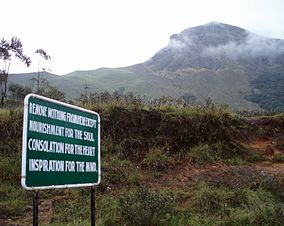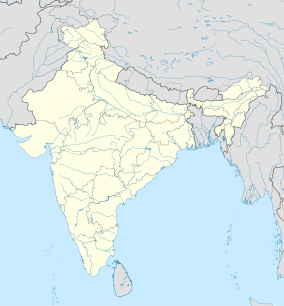Eravikulam National Park
| Eravikulam National Park | |
|---|---|
| ഇരവികുളം ദേശിയ ഉദ്യാനം | |
|
IUCN category II (national park)
|
|

Neelakurinji flowers in bloom and Naikolli Mala peak
|
|
|
Location in Kerala, India
|
|
| Location | Idukki, Kerala, India |
| Nearest city | Munnar |
| Coordinates | 10°12′00″N 77°04′59″E / 10.2°N 77.083°ECoordinates: 10°12′00″N 77°04′59″E / 10.2°N 77.083°E |
| Area | 97 km2 (37 sq mi) |
| Visitors | 148,440 (in 2001) |
| Governing body | Department of Forests and Wildlife, Government of Kerala |
| http://www.eravikulam.org/ | |
Eravikulam National Park is a 97 km2national park located along the Western Ghats in the Idukki district of Kerala in India. Situated between 10º05'N and 10º20' north, and 77º0' and 77º10' east, (See:map.) it is the first national park in Kerala.
Eravikulam National Park is administered by the Kerala Department of Forests and Wildlife, Munnar Wildlife Division, which also runs the nearby Mathikettan Shola National Park, Anamudi Shola National Park, Pambadum Shola National Park, Chinnar Wildlife Sanctuary and the Kurinjimala Sanctuary. Eravikulam National Park is a UNESCO World Heritage Site.
The main body of the park consists of a high rolling hill plateau with a base elevation of about 2,000 m. The terrain consists of high altitude grasslands interspersed with sholas. Anamudi, 2,695 meters, the highest peak in India south of the Himalayas is inside this park. Many perennial streams criss-cross the park. They merge to form tributaries of the Periyar river in the west and of the Cauvery River in the east. See:.Lakkom Water falls is in this region.
Twenty six species of mammals have been recorded in the park including the largest surviving population of Nilgiri tahr, estimated at about 750 individuals. The other ungulates are gaur, Indian muntjac and sambar deer. Golden jackal, jungle cat, wild dog, dhole, leopard and tiger are the main predators. Some little-known animals such as Nilgiri langur, stripe-necked mongoose, Indian porcupine, Nilgiri marten, small clawed otter, ruddy mongoose, and dusky palm squirrel are also found.Elephants make seasonal visits.
...
Wikipedia


